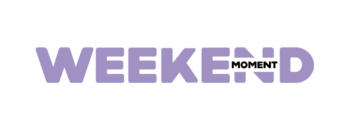In the digital era, social media channels such as Facebook and Instagram have emerged as vital instruments for healthcare professionals aiming to connect with and engage patients. Boasting billions of active users, these platforms present unmatched opportunities for targeted healthcare advertising. This approach can greatly improve your practice’s visibility, credibility, and patient engagement. Here are key reasons why Facebook and Instagram advertising should be integral parts of your healthcare marketing strategy.
1. Reach a Broad and Diverse Audience
Facebook and Instagram command vast audiences, hosting more than 2.9 billion and 1 billion monthly active users, respectively. These platforms enable healthcare providers to connect with a wide and varied audience across different ages, demographics, and regions. Such extensive reach is especially advantageous for healthcare practices catering to a diverse patient base or aiming to penetrate new markets.
By utilizing advanced targeting options, you can ensure that your ads are seen by the right audience. For example, you can target users based on specific criteria such as age, gender, interests, and even behaviors, ensuring that your ads reach individuals who are most likely to be interested in your services.
2. Build Trust and Credibility Through Engagement
A key benefit of social media advertising lies in its potential to cultivate trust and credibility among prospective patients. Facebook and Instagram transcend mere ad posting platforms; they are robust channels for audience engagement. Through consistent interaction via comments, messages, and posts, healthcare providers can build a community and position themselves as authoritative figures within their specialty.
Facebook’s interactive features, such as Facebook Live and chatbots, provide unique opportunities for real-time patient engagement. For example, hosting live Q&A sessions can address patient concerns directly, offering valuable information while demonstrating your expertise. For more insights on leveraging Facebook bots and live sessions, check out this blog post.
Instagram, with its visual-centric platform, allows you to share compelling visuals and patient testimonials that resonate with your audience. These can include before-and-after photos, educational infographics, and behind-the-scenes glimpses of your practice, all of which contribute to building a trustworthy and relatable brand image.
3. Cost-Effective Advertising with Measurable Results
Facebook and Instagram advertising are highly cost-effective compared to traditional marketing methods. Whether you have a small or large budget, you can tailor your ad spend to meet your needs, making it accessible for practices of all sizes. Additionally, these platforms provide detailed analytics and insights, allowing you to track the performance of your ads in real-time.
These insights enable you to measure key metrics such as reach, engagement, click-through rates, and conversions. With this data, you can optimize your campaigns to improve results continuously, ensuring that your marketing dollars are spent efficiently. For example, you can adjust your targeting, messaging, or even the visual elements of your ads based on what resonates most with your audience.
Conclusion
Facebook and Instagram advertising are not just optional components of a modern healthcare marketing strategy—they are essential. The ability to reach a broad and diverse audience, build trust and credibility through engagement, and achieve measurable results with cost-effective campaigns makes these platforms invaluable for healthcare providers. By integrating healthcare advertising on social media into your marketing plan, you can effectively grow your practice, attract new patients, and enhance your reputation in the community.
As social media continues to evolve, staying updated on the latest trends and best practices will help ensure that your healthcare marketing efforts remain effective and relevant in an increasingly digital world.


Comments are closed.